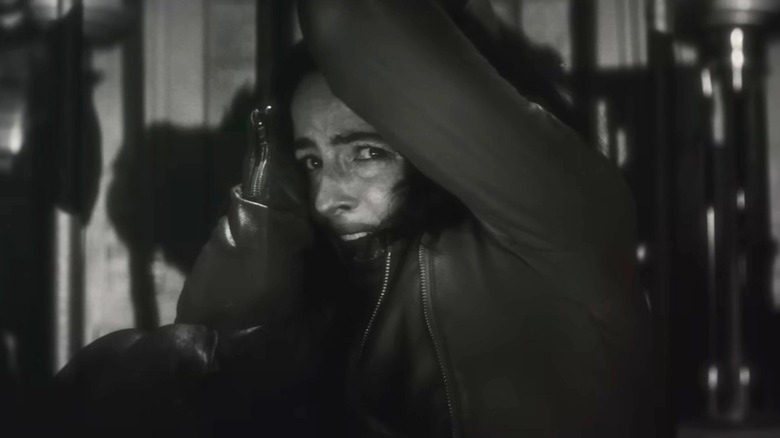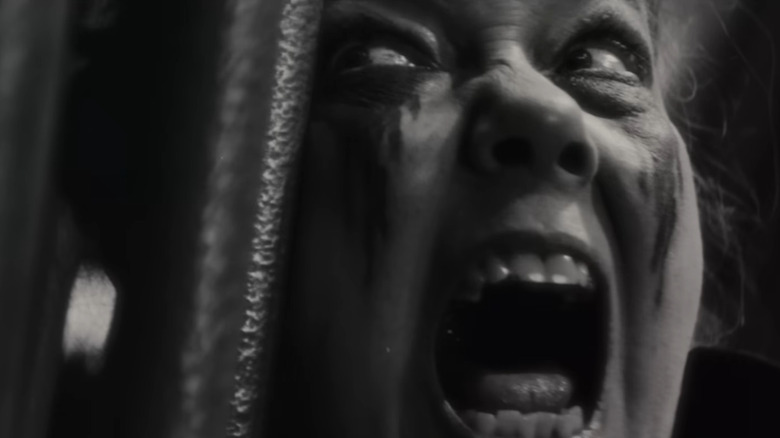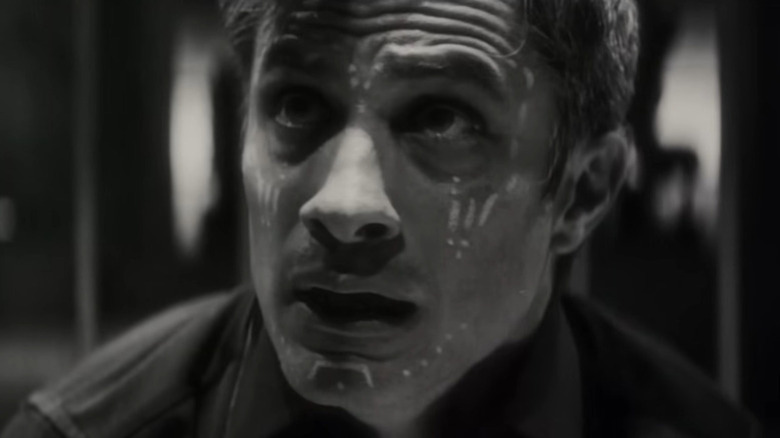How Michael Giacchino Ensured Marvel's Werewolf By Night Didn't Skimp On Bloody Horror [Exclusive]
There's no such thing as risk for the MCU anymore. As long as the active flagship characters like Spider-Man, Thor, and Ant-Man keep packing 'em in theatrically, Kevin Feige and his Marvel Studios brain trust can afford to use Disney+ as a laboratory/playground to bring the company's cult characters to life and see if there's an audience for further adventures — hence "Moon Knight," "She-Hulk: Attorney at Law," and "Wonder Man."
Still, did anyone see "Werewolf by Night" coming? Created and developed in 1972 by the team of Roy Thomas, Jean Thomas, Gerry Conway, and Mike Ploog, the series allowed Marvel to pay homage to the bloody horror comics published by EC, the famously subversive label that spurred uptight cultural scolds to form the censorious Comics Code Authority. The lycanthrope main character, Jack Russell, found enough of a readership to earn a standalone series (wherein, coincidentally, Moon Knight was introduced), but this was still a niche character, one who has been sporadically revisited and reinvented over the last 50 years.
When Marvel Studios announced a Halloween-timed "Werewolf by Night" special for Disney+, which was to mark the directorial debut for movie-and-TV-music-composer extraordinaire Michael Giacchino, no one expected a Universal-and-Hammer-horror-inflected movie. But according to the reactions to the film's initial screening at this year's Fantastic Fest, this is apparently what Giacchino has delivered. And he did so with zero pushback from his conservative corporate overlords.
The importance of plot-driven gore
In an interview with /Film's Ryan Scott, Giacchino enthused that his go-for-broke desire for gore was enabled by the studio:
"[I]t became a joke on set while we were shooting, which was like, when they would ask me, 'What do you think, Michael? What do you think?' And they would stop me and they'd go, 'Let me guess. More blood.' I'd be like, 'Yes, more blood.' Or, 'Can we amputate this thing?' Or, 'Can we do that?' And they would be like, 'Oh God, oh God, what are we making here?'"
While the classic EC comics reveled in gore, Giacchino wanted his bloodletting to be a necessary part of the story. His comments sound like those of a man who's watched John Landis's "An American Werewolf in London" more than a few times.
"We weren't making a sadistic movie, we weren't doing a slasher film where people are just indiscriminately killed for no reason at all. There's heart to this, there's empathy in this, and there's adventure, there's humor. I think, when you balance all those things out, you can get away with a lot more than you would if you just went straight on slasher."
Werewolf by Night in vivid, blood-red color?
Giacchino adds that his decision to shoot "Werewolf by Night" in black-and-white allowed him to go harder than he might've been able to had he gone the Hammer route and filmed in ultra-vivid color. There's precedent for this. Dropping the color out of the House of Blue Leaves sequence in "Kill Bill Vol. 1" is the only reason Quentin Tarantino's pulp epic escaped an NC-17 rating.
This being the digital era, we know full well that there is a color version of this film sitting on someone's hard drive. So maybe there is a risk the MCU isn't willing to take. Or perhaps, somewhere down the line, the studio will kick this cut over to Hulu and give gorehounds a look at the "Werewolf by Night" movie we've been waiting to see for 50 years.


